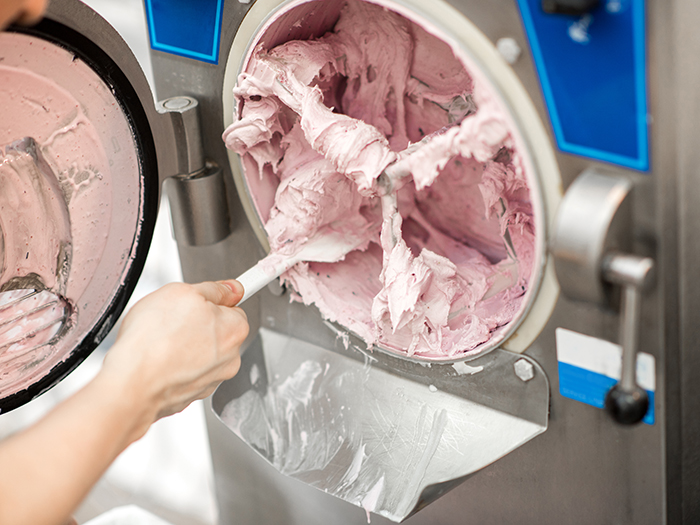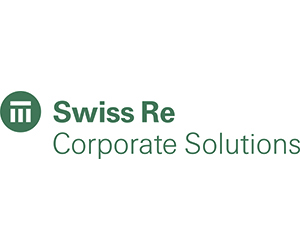Risk Scenario
A Recall Nightmare: Food Product Contamination Kills Three Unborn Children
Disclaimer: The events depicted in this scenario are fictitious. Any similarity to any corporation or person, living or dead, is merely coincidental.
PART ONE: THE HEAT IS ON
Reilly Sheehan, the Bethlehem, Pa., plant manager for Shamrock Foods, looks up in annoyance when he hears a tap on his office window.

Reilly has nothing against him, but seeing the face of his assistant plant operator Peter Soto right then is just a case of bad timing.
Sheehan, whose company manufactures ice cream treats for convenience stores and ice cream trucks, just got through digesting an email from his CFO, pushing for more cost cutting, when Soto knocked.
Sheehan gestures impatiently, and Soto steps in with a degree of caution.
“What?” Sheehan says.
“I’m not sure how much of an issue this will be, but I just got some safety reports back and we got a positive swipe for Listeria in one of the Market Streetside refrigeration units.”
Sheehan gestures again, and Soto shuts the office door.
“How much of a positive?” Sheehan says more quietly.
Soto shrugs.
“I mean it’s not a big hit and that’s the only place we saw it, so, hard to know what to make of it.”
Sheehan looks out to the production floor, more as a way to focus his thoughts than for any other reason.
Sheehan is jammed. It’s April, the time of year when Shamrock begins to ramp up production for the summer season. Shamrock, which operates three plants in the Middle Atlantic, is holding its own at around $240 million in annual sales.
But the pressure is building on Sheehan. In previous cost-cutting measures, Shamrock cut risk management and safety staff.
Now there is this email from the CFO and a possible safety issue. Not much time to think; too much going on.
Sheehan takes just another moment to deliberate: It’s not a heavy hit, and Shamrock hasn’t had a product recall in more than 15 years.
“Okay, thanks for letting me know,” Sheehan says to Soto.
“Do another swipe next week and tell me what you pick up. I bet you twenty bucks there’s nothing in the product. That swipe was nowhere near the production line.”
Soto departs, closing the office door gingerly.
Then Sheehan lingers over his keyboard. He waits. So much pressure; what to do?
“Very well then,” he says to himself, and gets to work crafting an email.
His subject line to the chief risk officer and the company vice president: “Possible safety issue: Positive test for Listeria in one of the refrigeration units.”
That night, Sheehan can’t sleep. Part of Shamrock’s cost-cutting meant that Sheehan has responsibility for environmental, health and safety in addition to his operations responsibilities.
Every possible thing that could bring harmful bacteria into the plant runs through his mind.
Trucks carrying raw eggs, milk and sugar into the plant. The hoses used to shoot the main ingredients into Shamrock’s metal storage vats. On and on it goes…
In his mind’s eye, Sheehan can picture the inside of a refrigeration unit. Ice cream is chilled, never really frozen. He can almost feel the dank chill. Salmonella and Listeria love that kind of environment.
Sheehan tosses and turns. Then another thought occurs to him. He recalls a conversation, just one question at a meeting really, when one of the departed risk management staff brought up the issue of contaminated product insurance.
Sheehan’s memory is hazy, stress shortened, but he can’t remember it being mentioned again. He pushes his memory again, but nothing.
“I don’t need this,” he says to himself through clenched teeth. He punches up his pillow in an effort to find a path to sleep.
PART TWO: STRICKEN FAMILIES
“Toot toot, tuuuuurrrrreeeeeeeeettt!”

The whistles of the three lifeguards at the Bradford Community Pool in Allentown, Pa., go off in unison, two staccato notes, then a dip in pitch, then ratcheting back up together.
For Cheryl Brick, 34, the mother of two and six-months pregnant with a third, that signal for the kids to clear the pool for the adult swim is just part of a typical summer day. Right on cue, her son Henry, 8, and his sister Siobhan, 5, come running back to where she’s set up the family pool camp.
Henry, wet and shivering and reaching for a towel, eyes that big bag.
“Mom, can I?”
And Cheryl knows exactly where he’s going.
“Yes. But this time, can you please bring your mother a mint-chip ice cream bar along with whatever you get for you and Siobhan?”
Henry grabs the money, drops his towel and tears off; Siobhan drops hers just as quickly, not wanting to be left behind.
“Wait for me!” Siobhan yells as Henry sprints for the ice cream truck parked just outside of the pool entrance.
It’s the dead of night, 3 am, two weeks later when Cheryl, slumbering deeply beside her husband Danny, is pulled from her rest by the sound of Siobhan crying in their bedroom doorway.
“Mom, dad!” says Henry, who is standing, pale and stricken, in the hallway behind Siobhan.
“What?” says Danny, sitting up in bed, but Cheryl’s pregnancy sharpened sense of smell knows the answer.
Siobhan, wailing and shivering, has soiled her pajamas, the victim of a severe case of diarrhea.
“I just barfed is what,” says Henry, who has to turn and run right back to the bathroom.
Cheryl steps out of bed to help Siobhan, but the room spins as she does so.
“Oh God,” she says, feeling the impact of her own attack of nausea.
A quick, grim cleanup and the entire family is off to a walk-up urgent care center.
A bolt of fear runs through Cheryl as the nurse gives her the horrible news.
“Listeriosis,” says the nurse. Sickening for children and adults but potentially fatal for the weak, especially the unborn.
And very sadly, Cheryl loses her third child. Two other mothers in the Middle Atlantic suffer the same fate and dozens more are sickened.
Product recall notices from state regulators and the FDA go out immediately.
Ice cream bars and sandwiches disappear from store coolers and vending machines on corporate campuses. The tinkly sound of “Pop Goes the Weasel” emanating from mobile ice cream vendor trucks falls silent.
Notices of intent to sue hit every link in the supply chain, from dairy cooperatives in New York State to the corporate offices of grocery store chains in Atlanta, Philadelphia and Baltimore.
The three major contract manufacturers that make ice cream bars distributed in the eight states where residents were sickened are shut down, pending a further investigation.
FDA inspectors eventually tie the outbreak to Shamrock.
Evidence exists that a good faith effort was underway internally to determine if any of Shamrock’s products were contaminated. Shamrock had still not produced a positive hit on any of its products when the summer tragedy struck. They just weren’t looking in the right place.
PART THREE: AN INSURANCE TANGLE
Banking on rock-solid relationships with its carrier and brokers, Shamrock, through its attorneys, is able to salvage indemnification on its general liability policy that affords it $20 million to defray the business losses of its retail customers.
But that one comment from a risk manager that went unheeded many months ago comes back to haunt the company.
All three of Shamrock’s plants were shuttered from August 2017 until March 2018, until the source of the contamination could be run down and the federal and state inspectors were assured the company put into place the necessary protocols to avoid a repeat of the disaster that killed 3 unborn children and sickened dozens more.
Shamrock carried no contaminated product coverage, which is known as product recall coverage outside of the food business. The production shutdown of all three of its plants cost Shamrock $120 million. As a result of the shutdown, Shamrock also lost customers.
The $20 million payout from Shamrock’s general liability policy is welcome and was well-earned by a good history with its carrier and brokers. Without the backstop of contaminated products insurance, though, Shamrock blew a hole in its bottom line that forces the company to change, perhaps forever, the way it does business.
Management has a gun to its head. Two of Shamrock’s plants, including Bethlehem, are permanently shuttered, as the company shrinks in an effort to stave off bankruptcy.
Reilly Sheehan is among those terminated. In the end, he was the wrong person in the wrong place at the wrong time.
Burdened by the guilt, rational or not, over the fatalities and the horrendous damage to Shamrock’s business. Reilly Sheehan is a broken man. Leaning on the compassion of a cousin, he takes a job as a maintenance worker at the Bethlehem sewage treatment plant.
“Maybe I can keep this place clean,” he mutters to himself one night, as he swabs a sewage overflow with a mop in the early morning hours of a dark, cold February.
![]()
Risk & Insurance® partnered with Swiss Re Corporate Solutions to produce this scenario. Below are their recommendations on how to prevent the losses presented in the scenario. This perspective is not an editorial opinion of Risk & Insurance.®.
Shamrock Food’s story is not an isolated incident. Contaminations happen, and when they do they can cause a domino effect of loss and disruption for vendors and suppliers. Without Product Recall Insurance, Shamrock sustained large monetary losses, lost customers and ultimately two of their facilities. While the company’s liability coverage helped with the business losses of their retail customers, the lack of Product Recall and Contamination Insurance left them exposed to a litany of risks.
Risk Managers in the Food & Beverage industry should consider Product Recall Insurance because it can protect your company from:
- Accidental contamination
- Malicious product tampering
- Government recall
- Product extortion
- Adverse publicity
- Intentionally impaired ingredients
- Product refusal
- First and third party recall costs
Ultimately, choosing the right partner is key. Finding an insurer who offers comprehensive coverage and claims support will be of the utmost importance should disaster strike. Not only is cover needed to provide balance sheet protection for lost revenues, extra expense, cleaning, disposal, storage and replacing the contaminated products, but coverage should go even further in providing the following additional services:
- Pre-incident risk mitigation advocacy
- Incident investigation
- Brand rehabilitation
- Third party advisory services
A strong contamination insurance program can fill gaps between other P&C lines, but more importantly it can provide needed risk management resources when companies need them most: during a crisis.











